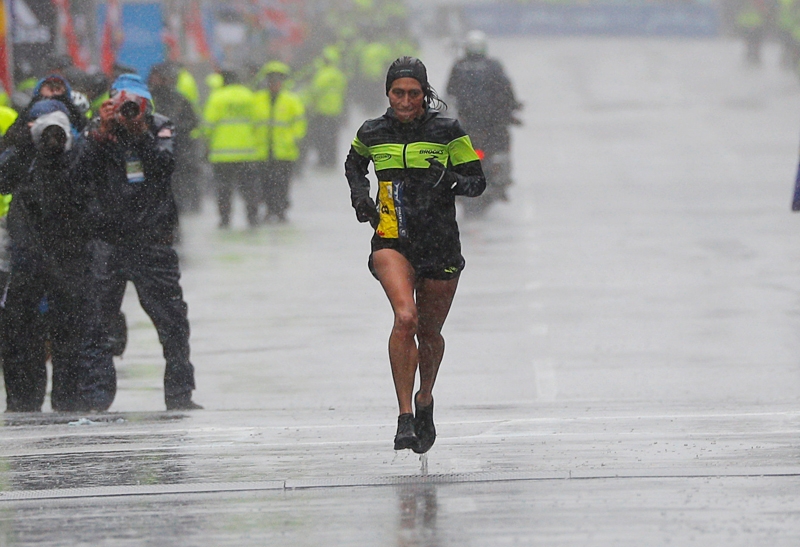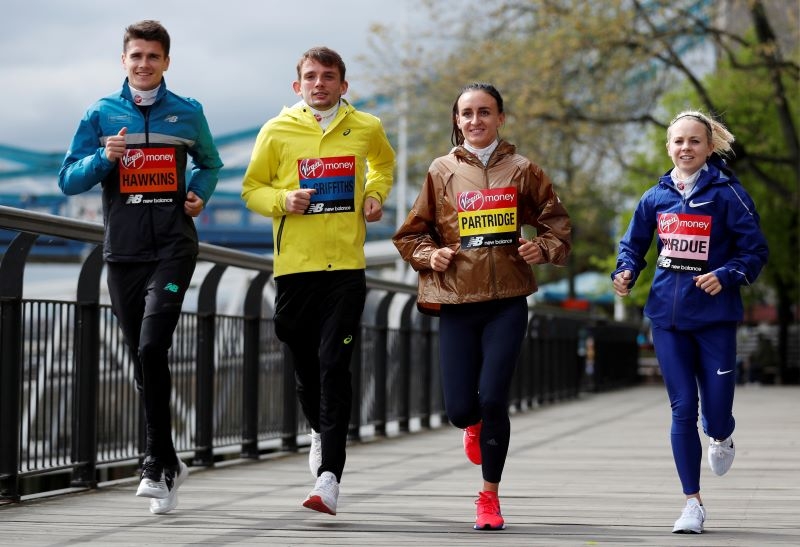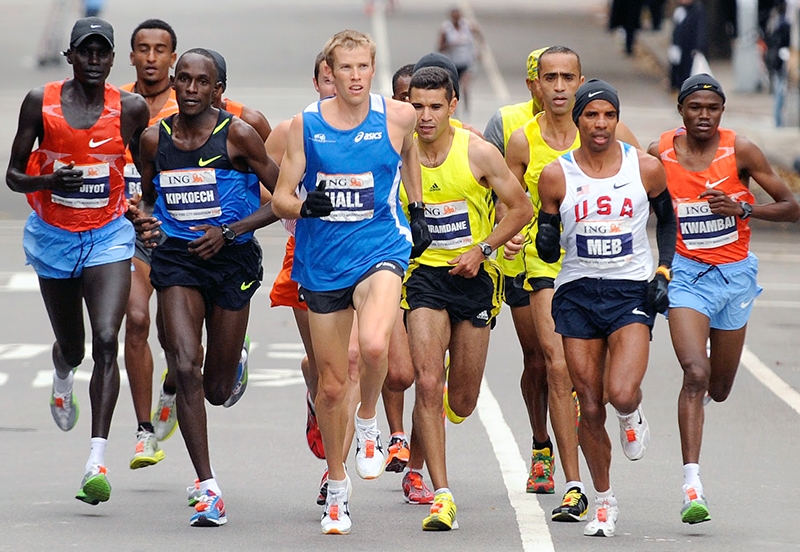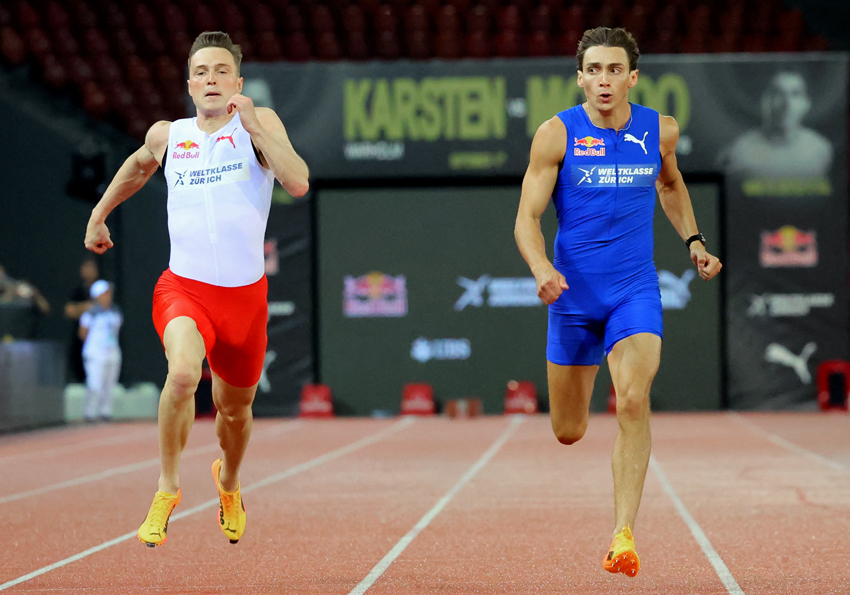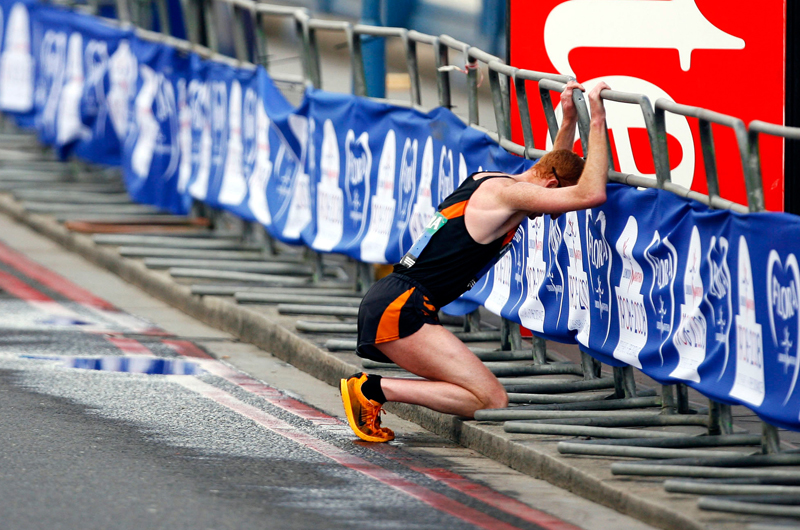You are viewing 1 of your 1 free articles. For unlimited access take a risk-free trial
Mind over matter: harnessing brain power to overcome fatigue
The conventional wisdom is that tiredness is something that happens to muscles. However, research suggests that your brain and central nervous system play a far greater role in the perception of fatigue than previously recognised. Andrew Hamilton investigates and explains the implications for the way you train…
Ireland is a marvellous place to spend some time. Friendly people, breathtaking scenery and Guinness to die for! However, should you wish to cycle across its green and pleasant landscape, beware of large dogs, which emerge without warning from front gardens at lightening speed, baring gleaming white teeth and snapping inches away from your heels.
It was during one of these high-speed sprints to escape the snarling jaws of a particularly humongous Alsatian that I stumbled across a truth that broke all the conventional rules of exercise physiology. Having covered 70 hard rain-soaked miles into a headwind, I was almost unable to spin the cranks, yet when the ‘hound from hell’ gave chase, I suddenly found myself accelerating at warp factor 9 to easily outsprint him until his bark could be heard no more!
An intriguing question
The intriguing question therefore is this: If fatigue occurs as a result of physical and chemical changes in the muscles doing the work, for example running out of ‘fuel’ or a build-up of fatiguing lactate, why is it that when you’re extremely fatigued, you can suddenly summon up phenomenal amounts of extra energy when required?
Panel 1: The chemical approach to fatigue
This approach proposes that there are three main causes of fatigue, all of them biochemical in nature:
- Glycogen depletion – Muscle glycogen is your body’s high-octane fuel but even relatively small amounts of depletion are known to increase perceptions of fatigue. Progressive muscle glycogen depletion is therefore suggested as a major reason for fatigue during longer workouts, and why for example, some cyclists experience ‘the bonk’;
- Lactate accumulation – When exercise intensity increases and there’s not enough oxygen available to the working muscles to produce all the energy required, anaerobic energy production increases to fill the gap, which dramatically increases lactate concentration. This lactate causes an increase in muscle acidity, which inhibits further production of energy in the muscles - typified by a ‘burning fatigue’ sensation in the muscles;
- Dehydration/electrolyte losses –Fluid losses of as little as 2% of bodyweight can impair performance and increase the sensations of fatigue. On top of this, the electrolyte minerals required for the firing and relaxation of muscle fibres are also frequently lost during sweating, adding to the risk of fatigue.
The chemical approach to fatigue (see panel 1) explains how fatigue arises in terms of biochemistry. However, if it’s a real description of what happens when we feel fatigue, how do we explain the following?:
- The boost in energy you sometimes feel when uplifting music is played even though tiredness has previously set in;
- That dip in energy you sometimes experience during a bike ride when you’re not tired, but suddenly spot a large hill coming your way!
- Why exercising at altitude can produce severe fatigue despite no significant accumulation of lactic acid and plenty of oxygen in the blood [1];
- Why in some studies on muscle fibre recruitment in cyclists, as glycogen is depleted and fatigue sets in, fewer and fewer fibres are used (you’d expect that as the fibres ran out of glycogen, an ever-larger proportion of the fibres would be recruited to help maintain the overall intensity) [2].
A number of exercise physiologists and psychologists now believe that while the physiological status and feedback from the muscles is important, the brain and its information processing plays a large role in determining how we feel during exercise. For example, we know that if you tell a cyclist that they’re going to cycle distance ‘x’ then later suddenly tell them that the ride is going to be shorter than they thought, they tend to experience a drop in their perceived level of exertion. Conversely, if you announce the ride will be longer, fatigue increases. According to the chemical approach, simply changing someone’s expectations of a workout dramatically changes muscle biochemistry but this is clearly nonsense!
Central governor theory
Originally proposed by professor of exercise physiology and running guru Tim Noakes, the thrust of the central governor theory is that the brain uses a mixture of conscious, sub-conscious and physiological cues to control the muscles and hold them back from reaching the true brink of exhaustion.
In other words, physiological factors (such as the level of muscle glycogen, lactate etc) are not the direct cause of fatigue, but just some of many signals that the brain takes into account along with other information, to set the level of fatigue you actually experience. According to the theory, the brain is constantly monitoring the situation and when it decides you’ve had enough, it creates the distressing sensations you then interpret as muscle fatigue.
In evolutionary terms, central governor theory makes sense; your ‘central governor’ (brain) is constantly monitoring both your body and its environment to ensure there’s always something left in case of an emergency so you can respond quickly to an unexpected threat. It also helps to explain a number of other phenomena. For example, in a study on interval training, researchers took a group of cyclists and assigned them to a 4-week interval-training program [3]. Despite the fact they completed only six interval sessions, the cyclists were able to shave an average of two minutes off their 40-kilometer time trial performance.
According to the chemical theory, this improvement is down to changes in the muscles that make them better at using oxygen, which in turn makes them more able to fight fatigue. In the above study however, these changes occurred extremely rapidly and Noakes believes that part of how interval-training works is by teaching the central governor that going faster won’t do your body any harm.
Drugs and rock n roll
Further evidence that the brain plays a major role in determining perceptions of fatigue comes from caffeine; a lot of research has demonstrated that caffeine can enhance both endurance and shorter duration, high-intensity exercise performance by reducing the perception of fatigue [4,5]. Much of the initial speculation was that caffeine exerted its effects by enhancing energy production, in particular fat burning. However, more recent research points strongly to that fact that the fatigue-beating effects of caffeine are in fact due to its ability to stimulate the central nervous system and block receptors in the brain that are associated with feelings of fatigue [6]. Likewise, there’s been much recent research into the effects of music and exercise performance, showing that music can increase time to exhaustion and reduce feelings of fatigue [7,8].
Using central governor theory
How can you apply central governor theory to enhance your own training? Here are a few tips based on the theory, which should make your training more productive and enjoyable:
- Use interval training sessions; they’ll not only produce desirable physiological changes, they’ll help to ‘teach’ the brain that higher intensities are ‘OK’ for your body, leading to lower fatigue perception at normal training pace;
- During more challenging training sessions/races, remind yourself of even harder and longer workouts that you’ve successfully achieved in the past to try and put your current workout into context; according to central governor theory, this should feedback into the your brain’s processing loop, reducing fatigue;
- For high-intensity sessions on the turbo-trainer or ergo, try riding to punchy, uplifting music (not recommended on road rides for safety reasons!);
- Try using positive imagery techniques, which (like music) can favourably affect your brain’s feedback processing and reduce fatigue perception;
- For racing or to achieve a PB, try experimenting with caffeine. Don’t neglect the basics however – good nutrition and adequate rest and recovery!
References
1. Journal of Experimental Biology, 204, 3225-3234, 2001
2. American Journal of Physiology, R281, 187-196, 2001
3. Medicine and Science in Sports and Exercise, 28, 1427-1434, 1996
4. Conlee, R.K. 1991. Amphetamine, caffeine, and cocaine. In: Perspectives in Exercise Science and Sports Medicine, Volume 4: Ergogenics—Enhancement of Performance in Exercise and Sport, pp. 285–330. Lamb, D.R., andWilliams, M.H. (Eds.). Dubuque, IA:Wm.C. BrownPublishers
5. Spriet, L.L. 2000. Caffeine. In: Performance-Enhancing Substances in Sport and Exercise, pp. 267–278. Bahrke, M.S., and Yesalis, C.E. (Eds.) Champaign, IL: Human Kinetics
6. Am J Physiol Regul Integr Comp Physiol 284: R399-R404, 2003
7. Percept & Motor Skills 83, 1347-1352, 1996
8. J of Sport Behavior 20, 54-68, 1997
Newsletter Sign Up
Testimonials
Dr. Alexandra Fandetti-Robin, Back & Body Chiropractic
Elspeth Cowell MSCh DpodM SRCh HCPC reg
William Hunter, Nuffield Health
Newsletter Sign Up
Coaches Testimonials
Dr. Alexandra Fandetti-Robin, Back & Body Chiropractic
Elspeth Cowell MSCh DpodM SRCh HCPC reg
William Hunter, Nuffield Health
Keep up with latest sports science research and apply it to maximize performance
Today you have the chance to join a group of athletes, and sports coaches/trainers who all have something special in common...
They use the latest research to improve performance for themselves and their clients - both athletes and sports teams - with help from global specialists in the fields of sports science, sports medicine and sports psychology.
They do this by reading Sports Performance Bulletin, an easy-to-digest but serious-minded journal dedicated to high performance sports. SPB offers a wealth of information and insight into the latest research, in an easily-accessible and understood format, along with a wealth of practical recommendations.
*includes 3 coaching manuals
Get Inspired
All the latest techniques and approaches
Sports Performance Bulletin helps dedicated endurance athletes improve their performance. Sense-checking the latest sports science research, and sourcing evidence and case studies to support findings, Sports Performance Bulletin turns proven insights into easily digestible practical advice. Supporting athletes, coaches and professionals who wish to ensure their guidance and programmes are kept right up to date and based on credible science.

